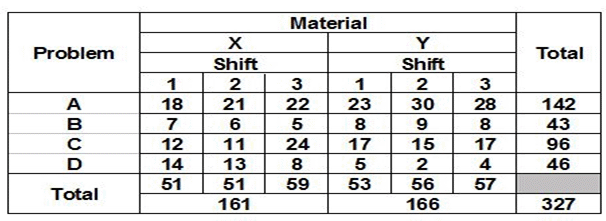Creating a SIPOC Chart
April 3, 2025
 Creating a SIPOC Chart
Creating a SIPOC Chart
The SIPOC Chart, being one of the fundamental documents of any process improvement project must be developed in such a manner that it is easy to understand. It must also be coherent with the logic inbuilt in the process. There is a method which has been described to ensure the proper development of the SIPOC…
 Challenges Faced in Conducting Voice of Customer Exercise
Challenges Faced in Conducting Voice of Customer Exercise
The Voice of Customer may sound like a simple exercise. However it would be safe to say that reading at the literature makes it look deceptively simple. Anyone who has an experience with market research will understand the issues involved. For a Six Sigma project to be successful, the Voice Of Customer must be accurate.…
 The 1.5 Sigma Shift Story
The 1.5 Sigma Shift Story
One of the greatest criticisms that have been mounted against the six sigma methodology is the fact that there is a possibility that the entire system is built on fudged numbers. Statisticians have claimed that the name six sigma is misleading. Here are the reasons why: 3.4 Defects Per Million or 2 Defects Per Billion…
A check sheet is a simple tool that was once a part of the seven basic tools of six sigma. It is said that check sheet has become obsolete because of the introduction of software which have the capability to record high volumes of data and present them in a format as required.
The check sheet was designed to be immensely simple. This is for two reasons. Firstly it was meant to be a tool for data recording which itself is quite simple. Secondly the check sheet was meant to be used by the people on the shop floor. It would not be very intelligent to expect them to be able to deal with complexity. Hence there was an inherent need for designing the check sheet the way it is.
A check sheet is meant to record simple facts and statistics that happen on the shop floor for over a period of time. The sheet is designed in such a way that it has the possible sources of error already written down. Users can add more possibilities. Then they record the data pertaining to the errors on a daily basis. This data can then be used as evidence in brainstorming sessions. A check sheet provides the raw materials that help users discover the problems that they need to know about before they solve them.
There were various types of check sheets available in the past. This was because the important point for each metric was different. For some defects it was important to find out the times at which they occurred. For certain other defects it was important to find out the location where they occurred so on and so forth.
These tally marks were then used to unearth a pattern which would then suggest possible sources of disturbance as well as help in solving the problem preventing further occurrence.
Check sheets have now become obsolete. They have been replaced by modern day Business Process Management software. This has enables more complex data to be automatically recorded. The process now depends neither of the intelligence of the human nor on the reliability of the check sheet.
Data is now automatically recorder and can be arranged in whatever manner required in a few clicks. Many software even produce the data in a ready to use graphical format enabling further convenience for the users.

A sample checksheet showing the problems listed on the left hand side and data pertaining to the frequency of their occurrence in the table
Your email address will not be published. Required fields are marked *